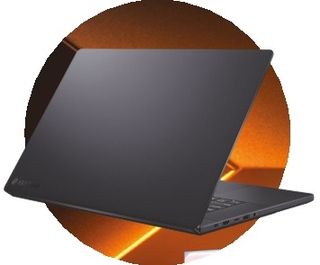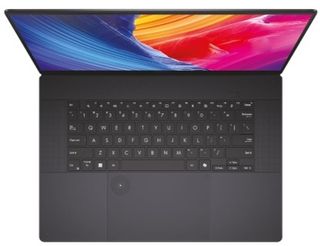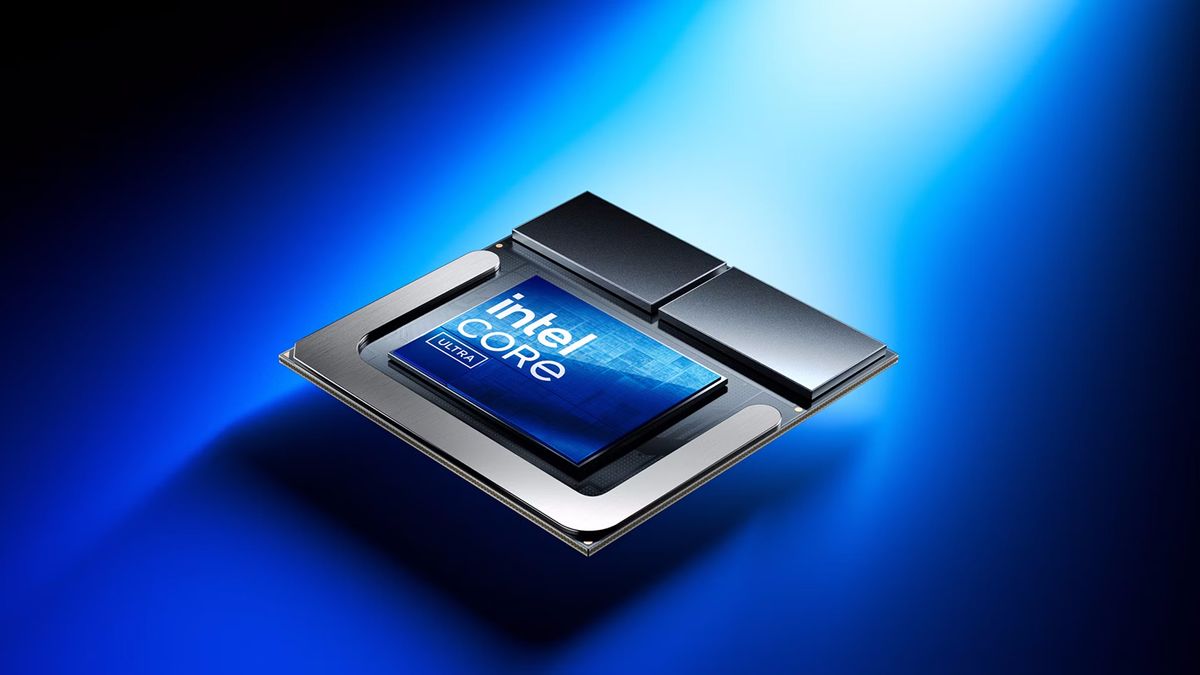While I could sum up this review in six words – like the PX13 opposite, only bigger – that doesn’t do the ProArt P16 justice. Yes, it shares many of the same design hallmarks and specs as its little brother, but this 16in laptop can justly be called a graphics workstation.
The bigger chassis means more room for fans and cooling systems than the PX13, and the CPU benefits from a maximum thermal design power (TDP) of 70W rather than 65W. Asus evidently can’t make room for a GeForce RTX 4080 within this still-slender chassis, instead sticking to the RTX 4070 found in the top-end PX13. What you do get, if you select the 2TB model, is 64GB of RAM; the 1TB/32GB version costs £2,600 inc VAT.
I tested the more expensive unit, and it was a few per cent ahead of the PX13 throughout my tests. In Cyberpunk 2077 and Dirt 5 it averaged 102fps and 122fps at 1080p High, compared to 91fps and 99fps. It was a similar story in the demanding SPECperfview 2020 viewsets: taking Catia, 3ds Max and Creo as examples, the P16 returned 67, 99 and 110, while the PX13 scored 65, 96 and 109. These scores are admittedly humbled by the towering monsters that are the best workstations.

Honors were even in our rundown tests, where the P16’s larger 90Wh battery evened out the greater power consumption required by its 16in panel. Here, though, a battery life of around nine hours under light use seems eminently reasonable compared to laptops with similar graphical power – usually gaming laptop machines – and I can’t imagine that many people will want to lug this 1.9kg beast around with them despite its slim dimensions. If you want to use that CPU at full power, you’ll need to find space in your bag for the 200W power supply, too.
This uses a proprietary connector, so both USB-C ports are free for connecting peripherals. The faster USB 4 port sits on the left, alongside HDMI, USB-A and 3.5mm connectors, while a slower USB-C 3.2 Gen 2 port is on the right alongside a second USB-A port and full-size SD Express 7 card reader. There’s no RJ45 port, which is a shame when there’s so much spare space, but Wi-Fi 7 offers some compensation.
Asus doesn’t squeeze in a number pad, but don’t expect a roomier keyboard than the PX13 as a result. So far as I could tell, they’re identical from the size of the keys to the half-height cursors and the single-height Enter key. That’s fine when you’re tight for space, as is the case for the PX13, but I would like separate Home, End, PgUp and PgDn keys on a laptop of this size, and for the cursors to be full height and separated out. At least Asus has increased the size of the glass-coated touchpad, which comes complete with the DialPad I describe opposite.

The main beneficiary of Asus’ decision not to include a number pad is the audio. Speakers sit on either side of the keyboard, with bass, depth and subtlety to match standalone speakers. Then we come to the expanse of screen, with a 3,840 x 2,400 resolution to play with – a fraction beyond 4K. It’s Pantone calibrated while an average Delta E of 0.43 speaks to its colour accuracy. Gamers should note that it peaks at 60Hz while HDR video editors won’t be impressed by a 500cd/m2 peak when viewing HDR content. Asus states a 400cd/m2 maximum for SDR, but I measured a more modest 377cd/m2.
I’ve no complaints about color coverage (100% of DCI-P3) or the level of user control, as the MyAsus app lets you pick from four colour profiles: native, sRGB, DCI-P3 and Display P3. You can also use MyAsus to play around with microphone settings, but I found the mics worked fine in the default mode. As did the 1080p webcam, although streamers might have hoped for a higher resolution.
More surprising is that Asus supplies Windows 11 Home rather than Pro, while a single-year C&R warranty is basic. Thankfully, the P16 is built like a tank, while the matte black metal chassis proved resistant to my fingerprints and scratches.
You can also access this laptop’s internals if you want to upgrade the SSD, or even add a second one in the spare slot. However, all the RAM is embedded on the motherboard, so if you want 64GB, take the hit at the time of purchase. And it is a hit; the main reason this machine doesn’t earn five stars is that I expect near-perfection for this price and, while I can forgive sacrifices in an ultraportable such as the PX13, I’m less forgiving when there’s this much space to play with. All that said, the ProArt P16 is a remarkably well-made and powerful laptop and, niggles aside, it will be a superb workhorse for years to come.







:quality(85):upscale()/2024/10/17/848/n/1922729/9dece426671163b35dcb11.60305022_.jpg)


 English (US) ·
English (US) ·